The snow is six or seven inches deep on the graves at the Netherlands American Cemetery outside the small village of Margraten. It was not this deep in the harsh winter of 1944, when these graves were dug by hand, but it was cold and rainy, and the steam poured off the backs of the diggers as they descended into the mud. It rose from the shoulders of the men who lugged the corpses, from the engines of the trucks that died at the mortuary tents, and from the bloodied bodies piled high beneath their canvas tops.
Every graveyard tells a story. This one is relatively straightforward. The Netherlands American Cemetery is today the final resting place of more than 8,200 American soldiers, airmen, and support personnel killed in the liberation of a portion of the Netherlands and in the assault on Germany in late 1944 and 1945. The Dutch have, since 1944, been going to extraordinary lengths to honor and remember the young, dead Americans buried in their midst. Since spring 1946, when a committee of caring citizens in the small town of Margraten completed its work matching a local “adopter” with every grave in the cemetery, no fallen American has been left without a mourner. No life has been forgotten. This work is not a duty to these thousands of adopters; it is an honor. Partial payment on a debt that can never be repaid. A thank-you from the Dutch to the men and women who liberated them from evil. A forever promise, now in its 80th year.
In 1868, three years after the Confederate surrender, a day was set aside at the end of May to commemorate Union Army soldiers killed in the Civil War. It was known as Decoration Day, a time to decorate graves. By World War I, the practice had spread across the United States, and the last Monday in May had been designated Memorial Day, a time to honor the American soldiers killed in every war.
Memorial Day 1945 fell on May 30, less than three weeks after Germany’s surrender. The Ninth Army’s work in Europe was done. Thousands of soldiers were returning home. But before they departed, the Ninth Army wanted to memorialize its dead, on their designated day, in the place where 17,000 American soldiers lay buried in what at that time was the largest U.S. military cemetery in Europe.
Captain Shomon’s 611th Graves Registration Company started preparations at Margraten on May 9, two days after Germany’s surrender. Bringing beauty to a vast field of trampled ground and endless rows of crosses was a daunting task. There wasn’t even any grass! The only color was the red and blue of the American flag atop the 50-foot spruce mast. And the dead were still arriving from the last engagements of the war. The body trucks idling. Registrars documenting new arrivals. The stripping line was busy, and so were the gravediggers.
So the citizens of Margraten stepped in, just as they had in March, when the bodies from earlier battles had overwhelmed the burial process. Those brutal weeks had changed the town’s relationship with the cemetery. It’s one thing to feel compassion in your heart; it’s another to become part of the process, to have the calluses on your hands to prove your respect and affection. The American officials who billeted in Margraten had long been considered family. After the horror of March, the villagers had begun to embrace the dead as family too. But their help was not enough, so Shomon hired workers from the nearby town of Vaals.
They mounded dirt on every grave, then came with boards to shape the mounds into perfectly straight, perfectly uniform rectangles the exact size of the graves below. They straightened and, in some cases, redug and reinserted crosses.
The graveyard needed paths, so Shomon requisitioned 200 truckloads of gravel from a stockpile near the Maas. The gravel beat back the mud, but looked too ragged at the edges, so Shomon sent men to Aachen to find thousands of square stones in the rubble. He used the stones to line the paths and square the corners.
The Civilian Committee Margraten’s task was flowers, finally in bloom across Limburg, as if they, too, were celebrating the end of the war. A young priest, Father Johannes Heuschen, took the lead. The 32-year-old Heuschen had been assigned to Sint Margarita Church in Margraten as chaplain shortly after liberation, but he had already developed a reputation as a terrific footballer and energetic advocate of the Civilian Committee Margraten’s efforts. While his fellow priest, Father Heynen, performed a nightly funeral Mass at the cemetery, Father Heuschen encouraged villagers to embrace the cemetery. He had seen an American mother in uniform, stationed in Europe, collapse at her son’s grave. Knowing that villagers were taking care of him, she told Heuschen, was a comfort. That’s what the Civilian Committee Margraten was encouraging people to do. By May, Heuschen had identified several hundred Dutch volunteers willing to help the Committee by “adopting” and caring for the grave of a soldier.
When Shomon mentioned the need for flowers, Heuschen leapt into action. Seventeen thousand graves meant 17,000 bushels of flowers — not individual flowers, but bright bushels — plus bouquets and wreaths. Heuschen contacted priests across Limburg, while Committee members contacted friends and relatives.
On the evening of May 26, Shomon sent 20 trucks to 60 villages to pick up the flowers arranged through Father Heuschen. The same trucks that once carried bodies now carried 100,000 flowers, maybe more. Two hundred men and women worked through the night to place them on graves. Six people made bouquets. Others laid the final stones, tied bows on wreaths, or smoothed the gravel paths. No one knew what to expect, or if the work could be done in time. But when first light broke on Memorial Day 1945, the exhausted workers, American and Dutch, beheld a glorious sight: 17,000 identical mounds of dirt, 17,000 perfectly straight and upright white crosses, and 17,000 armfuls of fresh-cut flowers, of every color and variety, resting atop every American grave.
The gravel, every piece in its place, framed the cemetery. A crisp, new American flag, hoisted that morning, flew proudly. Below it, the rubble of Aachen had been used to spell out in large white letters against dark brown soil: U.S. Military Cemetery, Margraten, Holland.
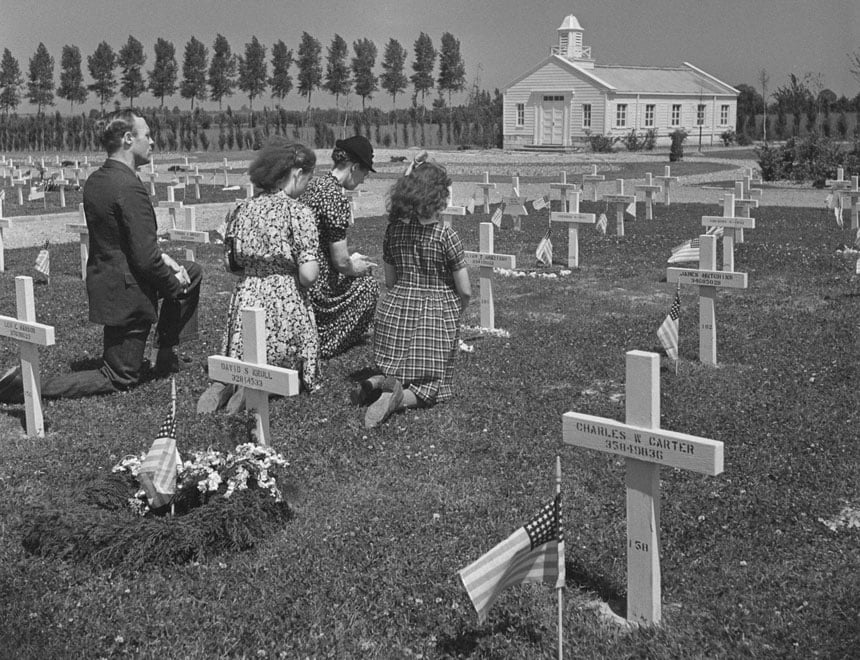
The attendees began arriving with the sun. They came on foot, on bicycles, and in farm carts pulled by dray horses. A few came in cars, but most walked, because they lived in the nearby towns and villages, and many of the Dutch had their cars and carts stolen by the Germans during the occupation. Soon, the crowd on the Rijksweg reached to the horizon. By 8:00 a.m., it stretched all the way to Maastricht, more than five miles away, and the crowds on the cemetery’s gravel verge were ten or fifteen mourners deep. Still, they came: families with children and young men and women from the Resistance, farmers and storekeepers, those who were better off and those who were struggling, older couples who had lost a son, and young couples who had taken soldiers into their hearts and homes. The Dutch knew Americans. If they didn’t know these Americans, they knew boys like them. There was no animosity, no squabbles over dances or rations. More than 30,000 Limburgers came to the first Memorial Day ceremony at Margraten because they loved the Americans. They held in reverence their sacrifice. They wanted to honor their friends.
At 9:00 a.m., volunteers began handing out small bunches of flowers to the children of Limburg. Thousands of soldiers representing every division of the Ninth Army lined the gravel perimeter, between the graves and the crowd. Many had been reluctant to come. Some of their duty stations were 400 miles away in France, and they dreaded the idea of turning the death of their friends into a spectacle. Death wasn’t neat and tidy, like this cemetery. It was messy and violent, heartbreaking and horrible. They knew its wrath. They had seen it up close, many times. Most just wanted to go home. What could a formal ceremony possibly add?
A hush fell on the crowd as a large black car rolled up the drive. Slowly, General William Hood Simpson, commanding general of the Ninth Army, emerged. As he ascended the wooden dais Dutch laborers had built for the ceremony, 1,000 Ninth Army soldiers saluted. General Simpson was flanked by his 16 corps and division commanders. He saluted them, one by one. Shomon’s 611th Graves Registration Company was in formation to the left of the platform. Beside them were the soldiers of the 3136th Quartermaster Service Company. Simpson saluted, acknowledging their work.
His speech was short — clear and crisp, but not loud. His voice didn’t have the bravado of battle, but the gentleness, the awe, of a man confronting the magnitude of his army’s sacrifice. He paused often to take in the crosses, the flowers, the 30,000 Dutch mourners standing at his soldiers’ backs. “In happier days, they were our neighbors — our friends,” he concluded of the fallen men. “Let us carry on. They would have it so.”
He stepped down from the dais and lifted a large wreath from a nearby stack, delivered by Shomon’s trucks the night before. With crisp ceremony, he placed it on the grave of an unidentified soldier. Saluted him. Turned. His 16 lieutenants followed one at a time, each placing a wreath on the grave of a soldier fallen under his command. The chaplains spoke. Many soldiers, many Dutchmen and women, bowed their heads and wept.
A 21-gun salute. A lone bugler playing taps, the bugle call that signifies the end of a military funeral, while a Black soldier from the 3136th lowered the crisp, new American flag to half-staff. In the silence, the last note of taps rang over the hills, as 30,000 people stood quietly, contemplating the cost of their freedom.

The soldiers were the first to break, stepping out among the graves, searching for their lost friends. They had not wanted to come, one soldier wrote, but they were glad they did. “Because the ceremony was simple, honest and sincere. It was devoid of bunk, it had no fancy speeches. It was a neighbor’s goodbye and a thank you.”
Airplanes roared overhead, and the 30 war correspondents in attendance rushed to post their stories to London and New York. The Allied officers walked to their cars, grasping each other’s shoulders in grim resolve. Eventually, the soldiers began to board their trucks, as orderly as they had come.
The Dutch didn’t want to leave. They stood on the wide gravel verges, waiting for more. So Father Heynen, who had celebrated many funeral Masses at the cemetery, celebrated another one. The Dutch sang together, celebrating Christ’s triumph over death. It was hours before the bulk of the crowd began to trickle away, back to Maastricht or their villages, their farms or stores. Twenty thousand left with a prayer card created by the Civilian Committee Margraten. The poem, written in English, was the Committee’s own:
You, who enter this cemetery look
How the crosses above the graves are silent and white,
Remember the price that your freedom took,
The lives of lots of soldiers who died.
They came from their country far away,
Where they left their well and woe
And their hope of a return had to stay
Like their bodies in Limburg, too …
As to buddies and brothers our country does honors
To those who fell, fighting our foes,
They are of our freedom the representatives and donors,
We consider them as our proper heroes.
You who enter here, look at the thousands of men,
Don’t forget the price of their lives anymore.
Remember, pray God for them
And that He preserves us from another war.
Editor’s note: In the years since the war ended, the remains of many of the 17,000 American soldiers buried at Margraten were repatriated to the U.S. Today, 8,288 remain interred at the Netherlands American Cemetery.
Robert M. Edsel is the author of five nonfiction books, including Rescuing da Vinci, Saving Italy, and The Monuments Men (also with Bret Witter) and is founder and chairman of the Monuments Men and Women Foundation. Bret Witter is a professional co-writer primarily of nonfiction books, including The Monuments Men.
Taken from Remember Us by Robert Edsel. Copyright © 2025 by Robert M. Edsel. Published by Harper Horizon, an imprint of HarperCollins Focus, LLC. harpercollinsfocus.com
This article is featured in the September/October 2025 issue of The Saturday Evening Post. Subscribe to the magazine for more art, inspiring stories, fiction, humor, and features from our archives.
Become a Saturday Evening Post member and enjoy unlimited access. Subscribe now
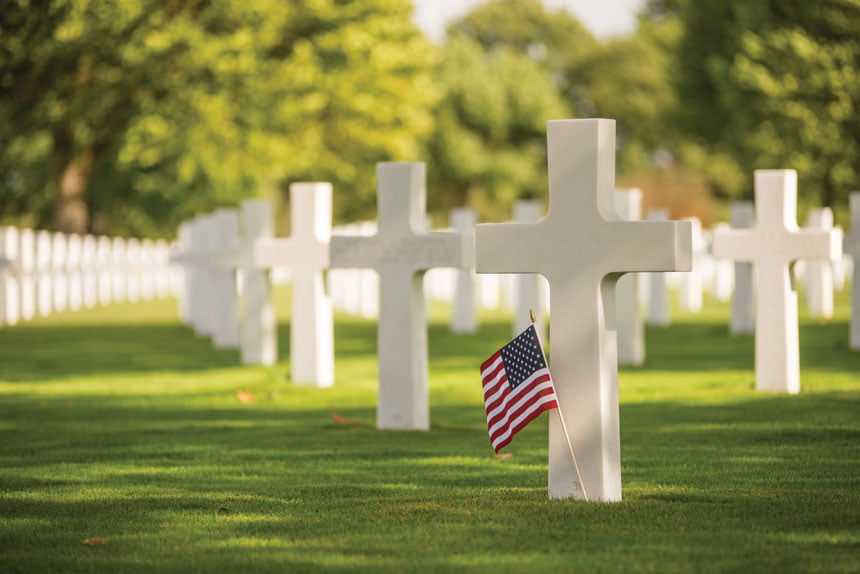
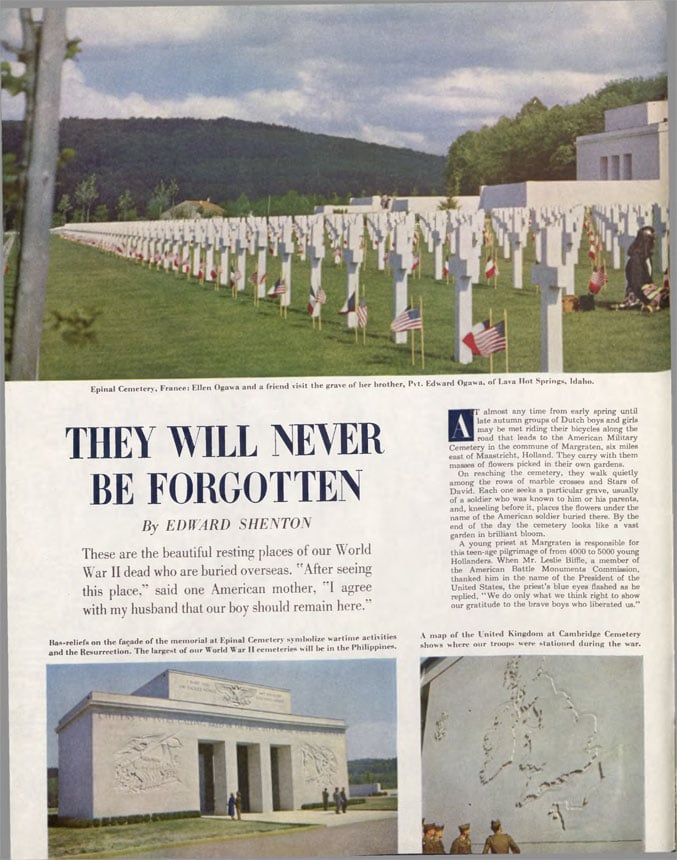
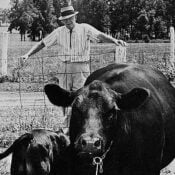
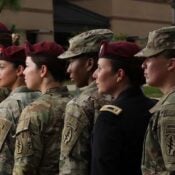

Comments
My mother’s husband is buried there. She was pregnant at the time of his death. For many years I tried to find a picture him. And finally last month a caring woman who dedicates herself to finding picture of soldiers for families worked hard for a few years searching and finially did find the picture of him. Miraculously after all these years, my brother was able to see what his father looked like,because of her dedication and with the help of others kind people. And I was honored to see what my mom’s 1st husband looked like.
Thank you to all of the many people who were,.and are a part of this beautiful resting place for our American heroes .
We are proud our soldiers and very grateful for your honoring them in such a kind caring way.
Dear Editor:
My Uncle Norm and four other men, were volunteered to serve with the International Red Cross.
The four of the, were Transport Truck Traffic Managers, with boat-loads of experience in shipping and off
loading supplies. They were assisted by a unknown number of Black soldiers from the U.S.A.-service brigade/regiment.
There job was to organize feeding the now starving Dutch and those of Belgium and eastern France.
Naturally carton loads of “Army K” rations were NOT exactly Waldorf Astoria food levels, but, to those poor people.
SPAM, tinned hams, tinned peaches, tinned plums, tens of baking flour and list goes on.
So, while the Dutch were grateful to the Canadians to get them out of starvation, they were grateful for their liberation from the tight Nazi control.
Montgomery should have been summarily shot.
He and his staff, were hounding this initiative until full Nazi surrender.
One of the men my uncle worked with in France, offered to organize the feeding of those in the Concentration
Camps. however, because the frail health of those in the Concentration Camps, the y had to be fed with NOT just “K rations”, but highly specialized and treated foods, which had to be air dropped into the Concentration Camp.
That poor chap who had fvolunteered, for feeding the Concentration Camps had a major mentatl collapse shortly after, and, had have special treatment foods by USA doctors…..He never fully recovered.
Montgomery should have been shot after the war end.
So.
Who fed the Dutch the Belgians and eastern French, we Canadians did.
Patton saw the need and similarly ordered his men to organize a food delivery for central and western France.
Montgomery ?
He was the last, and, he still bitched that the International Red Cross was “stealing his gas/petrol” despite being
shown several times that was N O T the case at all.
Uncle Norm and the other three went back to Holland and distributed winter clothes, boots &-etc,, to the Dutch,
The Belgians, and, the “eastern French”
This is why they are so grateful.
Liberation was just part one, part 2 & 3, was the feeding and clothing.
Again, it was we Canadian who distributed used winter clothing for kids to seniors, Hodeges-USA did it after Patton’s death, and STUPID MONTGOMERY came in last.
Sincerely
Gord Young- Peterboro [Still not in the 51st state]
I am a gold star son, on July 13th, 1944 at aged 31 years, my Father Gerrit Henry Vugteveen passed away.
I read the article with sadness. He was buried Sainte-Mere-Eglise Cemetery in Cherbourg-Octeville, Departement de la Manche, Basse-Normandie, France.
His body was exhumed in 1948 arrived in Rock Valley, Iowa via troup train. An American Soldier guarded his body for a wake before reburial. His dog tags were removed and given to my Mother. Reburial was at St. Mary’s Catholic Cemetery is located 1 mile south of Rock Valley. This marker is on the west half, Row 13 from center lane.